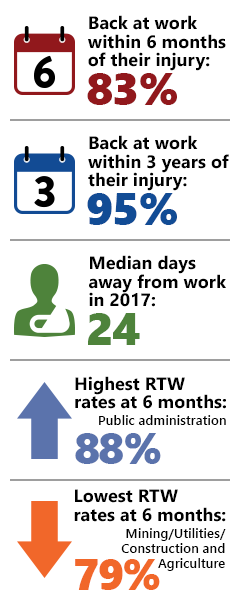Key findings
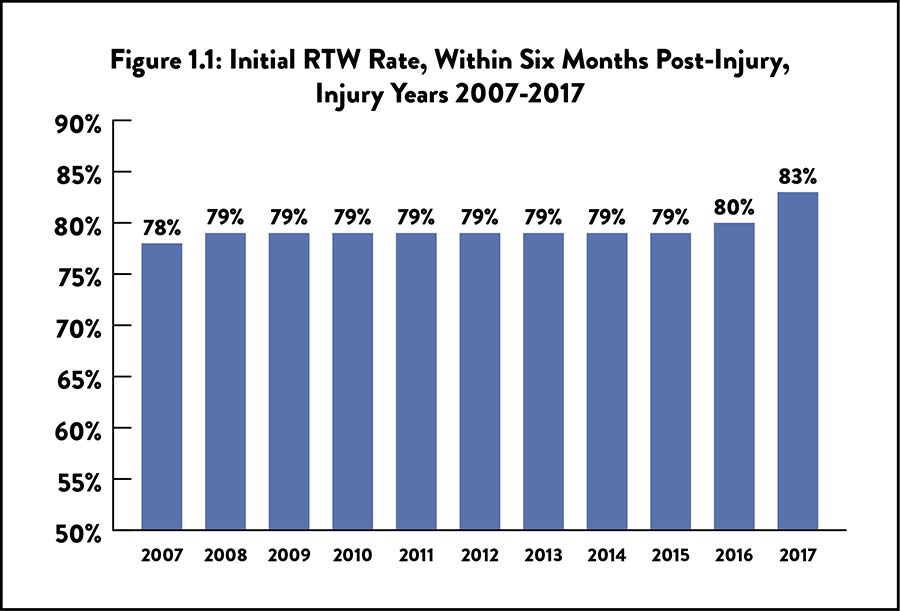
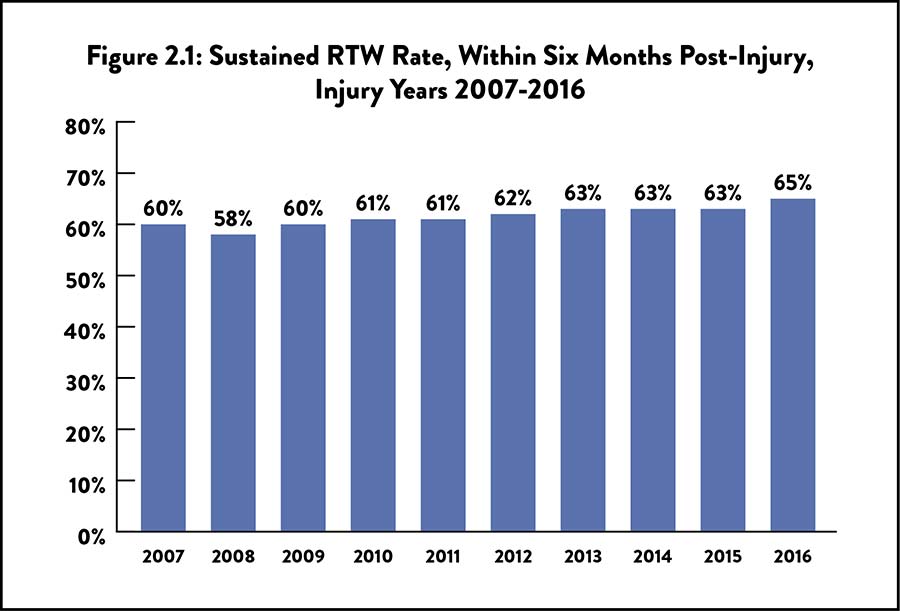
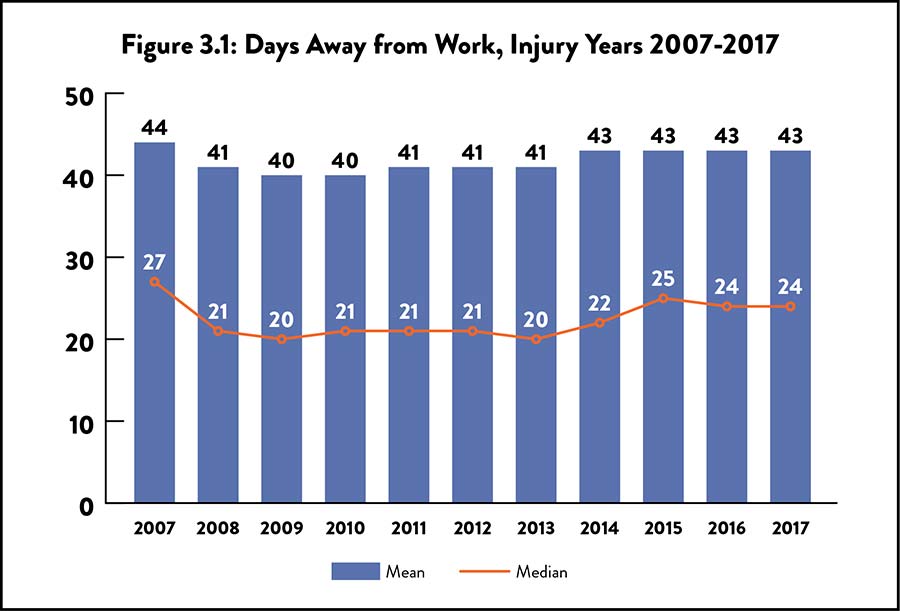
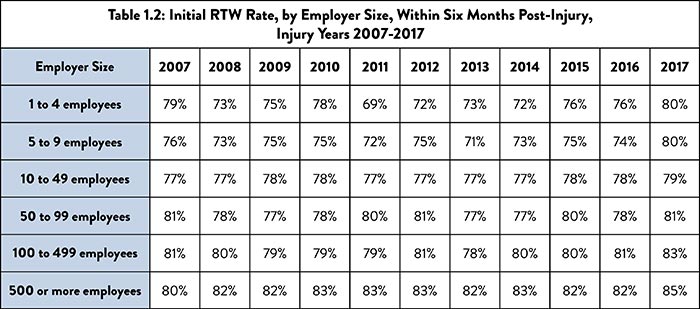
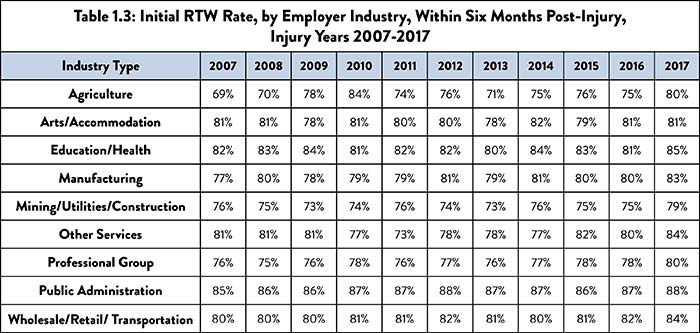
This analysis focuses on the RTW outcomes of injured employees who received temporary income benefits (TIBs) for their lost time. RTW rates are calculated using quarterly employee wage information from the Texas Workforce Commission.
It is important to note that several factors outside of the Texas workers’ compensation system affect RTW rates for injured employees, including the state’s economy, unemployment rates, industry changes, and changing employee demographics, among others. However, RTW rates are an important barometer of the overall effectiveness of a state’s workers’ compensation system.
